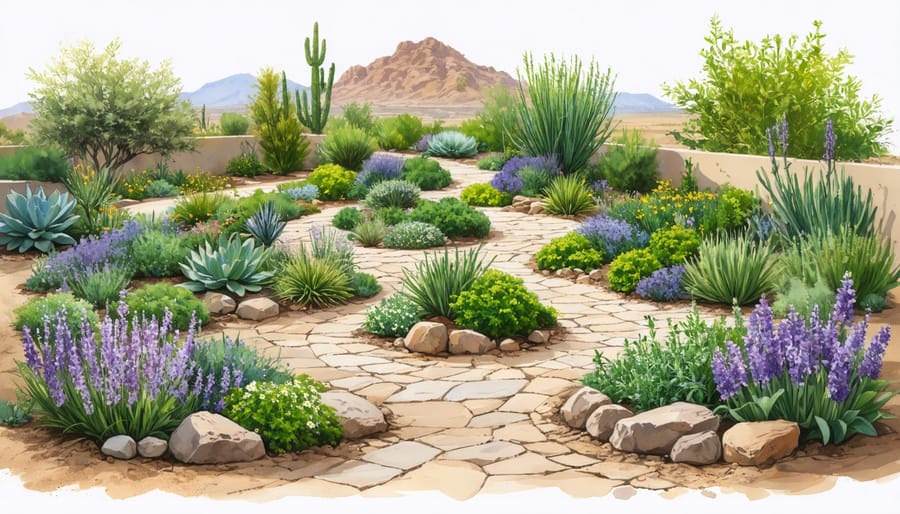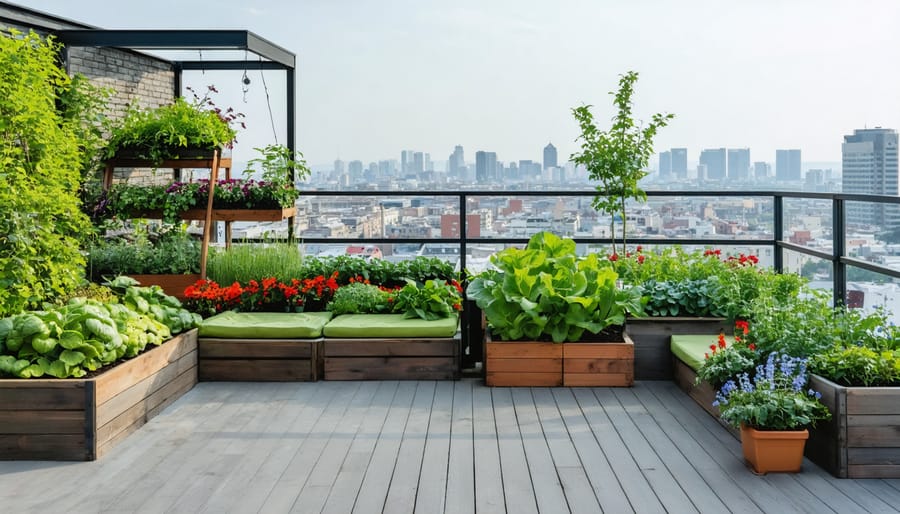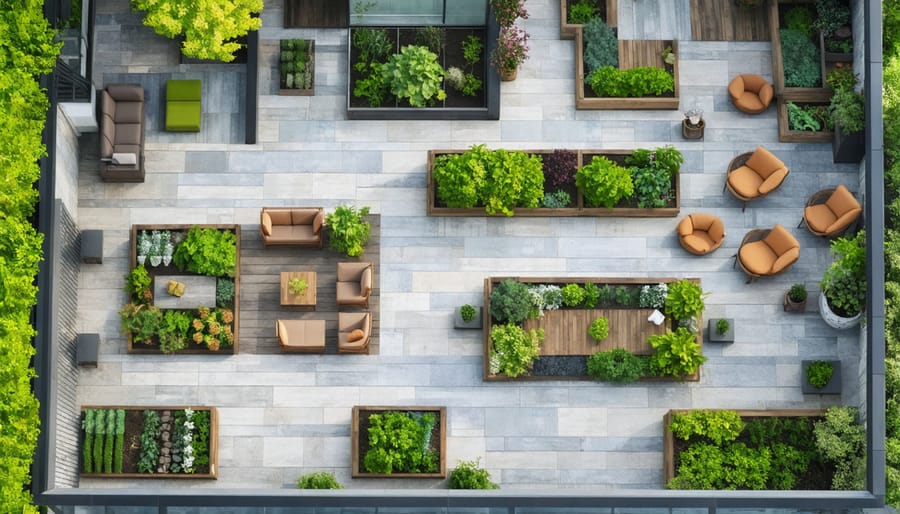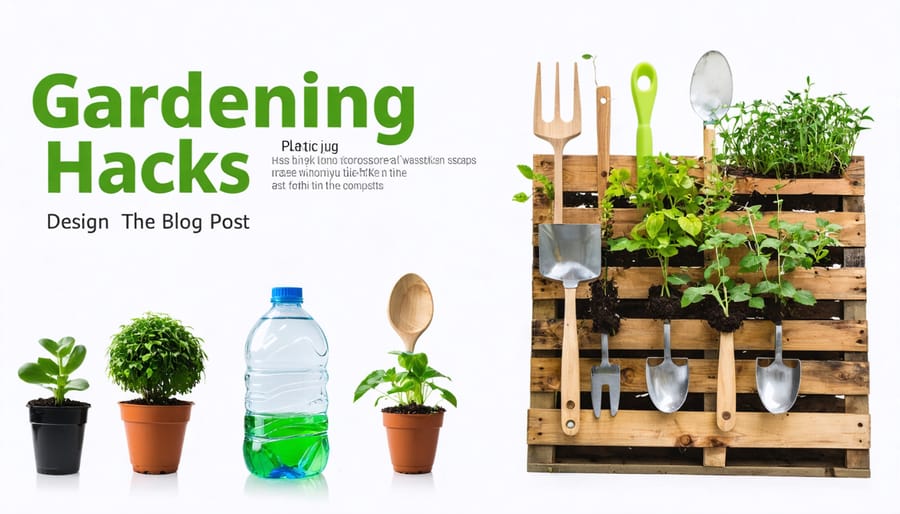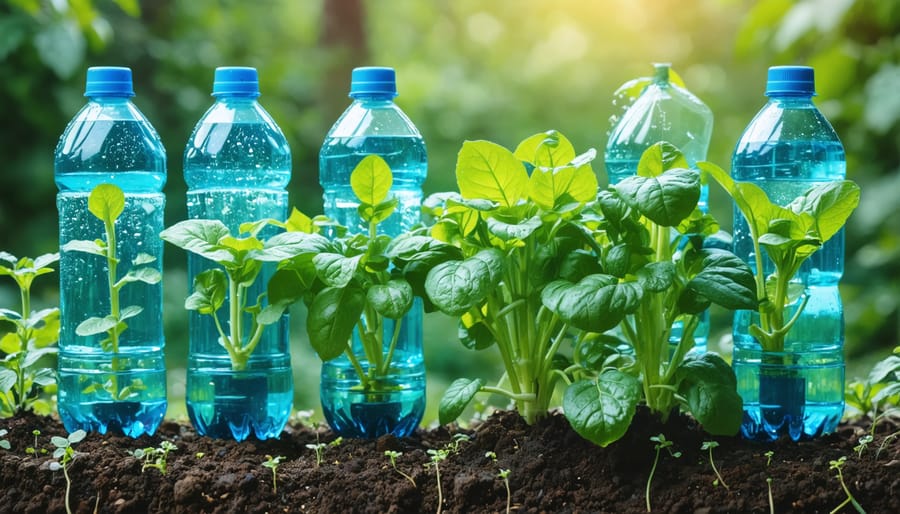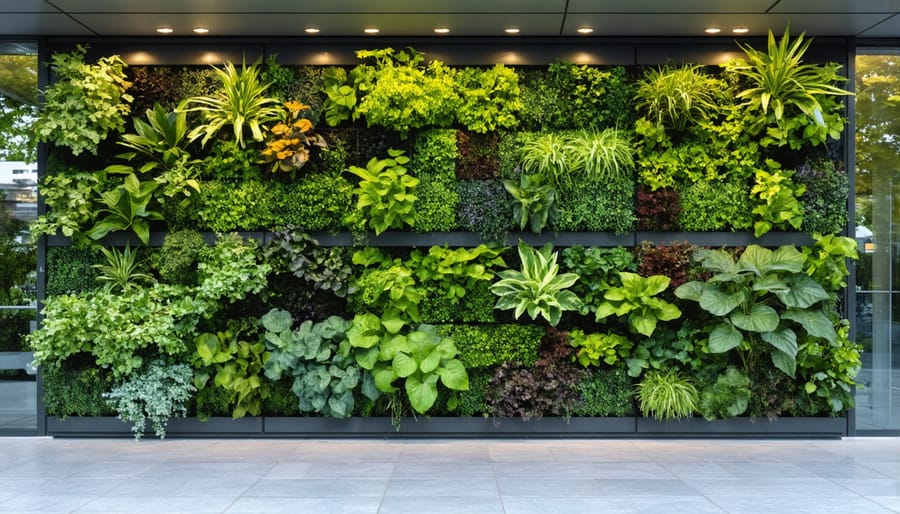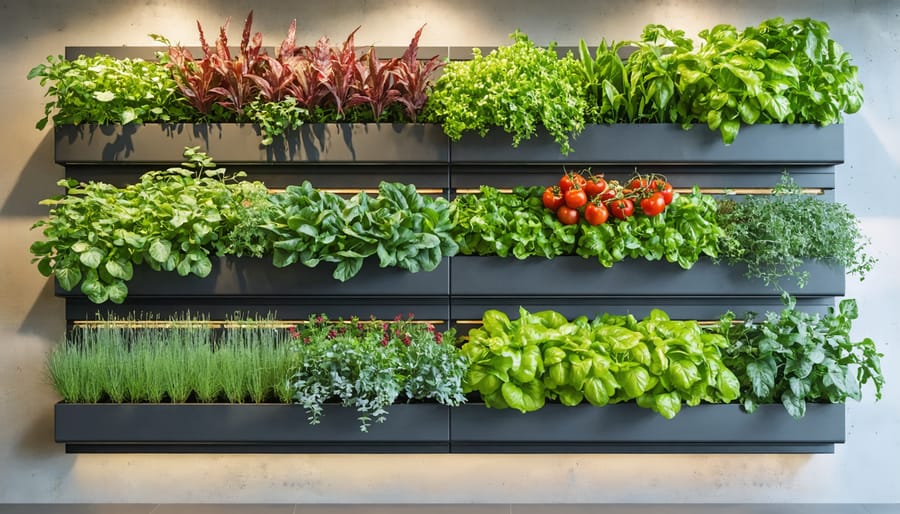Small Space Composting That Actually Works (Even in Apartments)
Transform your kitchen counter, balcony, or closet into a thriving compost hub by learning to maximize small spaces for eco-friendly waste management. Start with a compact bokashi bin under your sink to ferment food scraps without odors, creating nutrient-rich fertilizer in just two weeks. Stack multiple trays in a vermicomposting system the size of a shoe box, letting red wiggler worms process your organic waste while producing premium casting soil. Install a sleek, counter-top compost collector with activated charcoal filters to store daily scraps odor-free until processing. These space-conscious composting methods not only reduce household waste but also create premium soil amendments for indoor plants and container gardens, making sustainable living achievable regardless of space constraints.
Smart Indoor Composting Methods
Bokashi Composting
Bokashi composting is a game-changer for small-space dwellers who want to reduce food waste while creating nutrient-rich soil. This Japanese method uses beneficial microorganisms to ferment kitchen waste, including meat and dairy products that traditional composting typically can’t handle.
The process begins with a special bucket system featuring a spigot to drain liquid. Layer your food scraps with Bokashi bran (which contains the essential microorganisms), pressing down to remove air pockets. When the bucket is full, seal it tightly and let it ferment for two weeks. During this time, drain the liquid every few days – this “tea” makes an excellent diluted fertilizer for your plants.
What makes Bokashi perfect for apartments? It’s completely odor-free when done correctly, takes up minimal space (just one or two small buckets), and processes waste quickly. Plus, it’s indoor-friendly since the sealed system prevents pests and produces no foul smells.
The fermented waste can be buried in garden soil or added to a traditional compost pile. For apartment dwellers without outdoor space, you can create a soil factory using a large container with regular soil to break down the fermented material into usable compost.

Vermicomposting
Vermicomposting is a perfect solution for urban dwellers, transforming kitchen scraps into nutrient-rich compost using red wiggler worms. These industrious creatures can process up to half their body weight in food waste daily, all while living contentedly in a compact bin under your sink or in a closet corner.
To start, choose a shallow plastic bin with drainage holes and a catch tray for excess moisture. Layer the bottom with moistened shredded paper, cardboard, or coco coir, then add your worm colony. Red wigglers thrive in temperatures between 55-77°F, making indoor spaces ideal for year-round composting.
Feed your worms a diet of fruit and vegetable scraps, coffee grounds, and crushed eggshells. Avoid meat, dairy, oils, and citrus fruits. Keep the bedding moist like a wrung-out sponge and harvest the dark, crumbly castings every 3-4 months.
A well-maintained worm bin is odorless and takes up minimal space – typically no larger than a shoe box. Urban gardener Maria Chen shares, “My under-sink worm bin produces enough compost for all my houseplants and balcony garden, plus it’s a fascinating conversation starter when guests visit!”

Balcony and Patio Solutions
Compact Tumbling Composters
Compact tumbling composters are a game-changer for small-space composting, offering a clean and efficient solution that fits on balconies, patios, or tiny yards. These innovative devices consist of a sealed drum that rotates on an axis, allowing you to mix your compost materials with just a few easy turns.
Unlike traditional compost piles, tumblers keep everything contained and pest-free while speeding up the decomposition process. Most models can transform kitchen scraps and yard waste into rich, garden-ready compost in just 4-8 weeks. The elevated design also makes adding materials and harvesting finished compost a breeze – no bending or heavy lifting required!
Look for dual-chamber tumblers that let you add fresh materials to one side while the other batch finishes composting. For optimal results, maintain a good balance of green materials (food scraps, coffee grounds) and brown materials (dried leaves, paper), and give your tumbler a few spins every couple of days.
Many urban gardeners find that a 37-gallon tumbler provides enough capacity for a small household while taking up minimal space. Plus, the sealed design helps control moisture and odors, making it perfect for shared living spaces.

Stack-and-Leave Systems
Stack-and-leave composting systems offer an innovative vertical solution for space-challenged composters. These systems typically consist of stackable trays or bins that can be placed one above another, making efficient use of vertical space while allowing gravity to aid in the composting process.
The basic setup involves adding fresh materials to the top tray while finished compost accumulates in lower levels. As organic matter breaks down, it naturally shifts downward through mesh or perforated bottoms, creating a continuous flow system. Most stack-and-leave designs feature 3-4 tiers and can fit comfortably on a balcony or in a corner of your kitchen.
One of the biggest advantages of these systems is their hands-off nature – there’s no need for regular turning or mixing. The vertical design also promotes better airflow, which speeds up decomposition and reduces odors. Many models come with secure lids and tight seals to keep pests out and contain any potential smells, making them perfect for indoor use.
To maximize efficiency, layer your materials with a mix of browns (paper, cardboard) and greens (food scraps) in the top tray, and let nature do the rest. Within a few months, you’ll have rich compost ready to harvest from the bottom.
What to Compost (and What to Avoid)
Successful small-space composting starts with knowing exactly what materials to include and what to keep out. For the “greens” category, add kitchen scraps like fruit and vegetable waste, coffee grounds, and eggshells. These nitrogen-rich materials provide essential nutrients for your compost. Tea bags (remove staples first), fresh grass clippings, and composting fallen leaves make excellent additions too.
For “browns,” incorporate paper products like cardboard, newspaper (torn into small pieces), and paper towel rolls. These carbon-rich materials help maintain proper moisture levels and prevent odors. Small amounts of dried leaves, straw, or sawdust work well in limited quantities.
Just as important is knowing what to avoid. Never add meat, dairy, or oily foods, as these attract pests and create unpleasant odors – especially crucial in small spaces. Skip diseased plants, chemically treated wood products, and glossy or colored paper. Pet waste, while organic, doesn’t belong in your compost bin either.
For apartment composting, keep materials small and manageable. Chop kitchen scraps into smaller pieces to speed up decomposition. Maintain a rough ratio of three parts browns to one part greens to achieve the perfect balance. Remember that in small-space composting, less is more – start with modest amounts and adjust as you become more comfortable with the process.
Store food scraps in a countertop container with a tight-fitting lid between additions to your main composting bin. This prevents fruit flies and keeps your kitchen tidy while you build your composting routine.
Troubleshooting Common Issues
Even the most experienced composters face common composting challenges, but don’t worry – most issues have simple solutions! Here’s how to tackle the most frequent problems in small-space composting:
Unpleasant Odors
If your compost starts smelling bad, it’s usually due to too much moisture or too many “green” materials. Add more brown materials like dried leaves or paper, and ensure proper airflow by turning the mixture regularly. For indoor bins, sprinkle a thin layer of soil or coconut coir on top to absorb odors.
Fruit Flies
These pesky visitors often appear when food scraps are exposed. Combat them by always covering fresh kitchen scraps with brown materials or finished compost. You can also keep a small container of scraps in your freezer and add them to your compost frozen to discourage flies.
Slow Decomposition
If your compost isn’t breaking down, it might need better balance. Aim for smaller pieces (chop kitchen scraps before adding), maintain moisture like a wrung-out sponge, and ensure a good mix of green and brown materials. For small bins, try adding a handful of finished compost to introduce beneficial microorganisms.
Moisture Issues
Too wet? Add dry browns and ensure proper drainage. Too dry? Spritz with water and add more green materials. For indoor composting, line the bottom of your bin with newspaper to absorb excess moisture.
Limited Space
When your bin gets full, try removing finished compost from the bottom while continuing to add materials on top. You can also start a second small container while the first “rests” and completes decomposition.
Temperature Concerns
Small-space composters might not heat up like larger piles, and that’s okay! Focus on maintaining consistent moisture and a good material mix. Your compost will still break down, just more slowly through cold composting.
Remember, perfection isn’t necessary – even small-scale composting makes a positive environmental impact. With these troubleshooting tips, you’ll be well-equipped to handle any challenges that arise in your composting journey.
Don’t let limited space hold you back from joining the composting revolution! As we’ve explored throughout this guide, there are numerous creative and efficient ways to turn your kitchen scraps into valuable organic matter, even in the tiniest of spaces. Whether you choose a compact bin system, worm composting, or an electric composter, the key is selecting a method that fits your lifestyle and available space.
Remember, successful small-space composting is all about maintaining the right balance of materials, managing moisture levels, and staying consistent with your routine. The benefits far outweigh the initial learning curve – you’ll reduce waste, create nutrient-rich soil for your plants, and contribute to a more sustainable future.
Start small, experiment with different techniques, and don’t be afraid to adjust your approach as you learn. Even a modest composting setup can make a significant environmental impact while providing you with satisfaction and valuable organic material for your indoor or balcony garden. Take that first step today – your plants and the planet will thank you!






